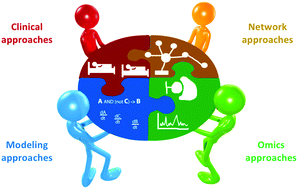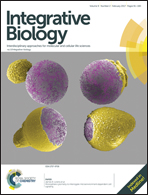Next generation of network medicine: interdisciplinary signaling approaches
Abstract
In the last decade, network approaches have transformed our understanding of biological systems. Network analyses and visualizations have allowed us to identify essential molecules and modules in biological systems, and improved our understanding of how changes in cellular processes can lead to complex diseases, such as cancer, infectious and neurodegenerative diseases. “Network medicine” involves unbiased large-scale network-based analyses of diverse data describing interactions between genes, diseases, phenotypes, drug targets, drug transport, drug side-effects, disease trajectories and more. In terms of drug discovery, network medicine exploits our understanding of the network connectivity and signaling system dynamics to help identify optimal, often novel, drug targets. Contrary to initial expectations, however, network approaches have not yet delivered a revolution in molecular medicine. In this review, we propose that a key reason for the limited impact, so far, of network medicine is a lack of quantitative multi-disciplinary studies involving scientists from different backgrounds. To support this argument, we present existing approaches from structural biology, ‘omics’ technologies (e.g., genomics, proteomics, lipidomics) and computational modeling that point towards how multi-disciplinary efforts allow for important new insights. We also highlight some breakthrough studies as examples of the potential of these approaches, and suggest ways to make greater use of the power of interdisciplinarity. This review reflects discussions held at an interdisciplinary signaling workshop which facilitated knowledge exchange from experts from several different fields, including in silico modelers, computational biologists, biochemists, geneticists, molecular and cell biologists as well as cancer biologists and pharmacologists.

- This article is part of the themed collections: Recent Open Access Articles, Integrative Biology Recent Review Articles and Integrative Biology Most Downloaded Articles


 Please wait while we load your content...
Please wait while we load your content...